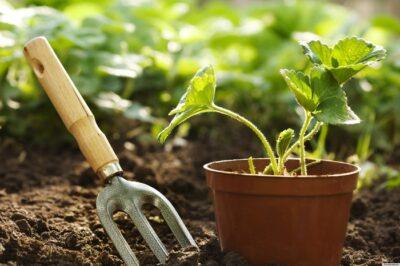
Horticulture – that is, the art and science of growing plants — has long been employed as a means of enhancing a person’s physical, mental and spiritual well-being.
The therapeutic effect of gardening has always been obvious to those engaged in this activity as part of a hobby or occupation. There are numerous examples in autobiographies of how active involvement in the planting and nurturing of gardens, or just being in a natural setting, helped people tide over the darker phases in their lives.
Author Kenneth I. Helphand wrote about concentration camp “Defiant Gardens” in his 2006 work by that name. These were small patches of greenery and colors that sprung up unbidden from time to time in concentration camps, Jewish Ghettos, and even in trenches in the war fields, helping people whose lives were riddled with terror and deprivation.
Therapeutic Horticulture gets Recognized
The credit of formally documenting and showcasing the therapeutic effect of horticulture goes to Dr. Benjamin Rush, who is hailed as the Father of American Psychiatry. It was in 1798 that he drew attention to the positive effect of gardening on people with mental disorders.
Subsequently, garden spaces were incorporated into several hospitals and nursing homes in the United States and elsewhere, and it was found that when patients had access to nature, or just had a good view from their windows, it markedly reduced their need for medication and the length of hospital stay. Gardening was successfully used for the rehabilitation of World War II veterans, too.
Development of Horticulture Therapy
Horticulture therapy, or therapeutic horticulture, eventually became a field of study, and as more research was done on this subject, it was learned that some kind of landscapes are more beneficial than others in bringing about healing and restoration of spirit.
Order your 2015 Heirloom Solutions seed catalog and get $20 in your account!
How does horticulture work – and what are the benefits? Let’s examine the issue.
Being with Nature
 Humans were born and raised in the lap of nature. The recent alienation from nature, as a result of cityscapes replacing natural landscapes in the last few centuries, is insignificant on the human timeline when you consider how long we have been around. Reconnecting with nature is a return to our home and hearth. This vital connection naturally restores our spirits, health and sense of well-being.
Humans were born and raised in the lap of nature. The recent alienation from nature, as a result of cityscapes replacing natural landscapes in the last few centuries, is insignificant on the human timeline when you consider how long we have been around. Reconnecting with nature is a return to our home and hearth. This vital connection naturally restores our spirits, health and sense of well-being.
Creative Spirit
Conscious creation is a unique human feature. Taking part in the creative process appeals to our inner self in more ways than one. Planting and nurturing a garden, and watching it grow, is a very tangible creative experience.
Dr. Maria Montessori, who did research in the early development of human psyche, realized that our brain develops in direct relation to the work of our hands. Working hands-on in a garden stimulates brain centers to direct healing, restoration and growth on physical and emotional and intellectual levels.
Therapeutic
Any garden setting and gardening activity has its own merits, but well-designed, purpose-oriented gardens give maximum benefit in active horticulture therapy. Landscape artists and horticulture therapists work in tandem with the end users to design and implement therapeutic gardens. Some of the features of these specialized settings are:
1. Accessibility
The garden should be accessible to the people using it. Wide entrances and gently graded paths should allow people to access every nook and corner of the garden.
They should be able to work on the garden beds and to touch and feel the plants. Wherever necessary, containers and planting beds should be raised for the benefit of the elderly and wheelchair-bound users.
2. Multi-level Sensory Stimulation
The use of different flower and foliage colors, various plants with fragrant leaves and flowers, and diversity in texture and pattern help provide multi-sensory stimulation. For example, edible herbs and natural rocks are a great asset to these gardens.
3. Elements of Nature
Rhythmic movement of water, as in a waterfall or a brook, has a calming effect. The garden should be designed in such a way that people can see the wind in the trees and experience the soothing touch of cool breeze on the skin.
New Natural Fertilizer Doubles Garden Production!
Wildlife can add another dimension to the garden space. Flowers and trees that attract butterflies and birds can be included. Koi ponds are great, too.
4. Social interaction
 Socialization with other people within the casual setting of an outdoor space can benefit the users. Areas where people can get together, work together, and interact with each other should be built into the design.
Socialization with other people within the casual setting of an outdoor space can benefit the users. Areas where people can get together, work together, and interact with each other should be built into the design.
5. Privacy
People, especially those going through difficult times, need a time and place to be alone for contemplation and repose. Seating arrangements in remote areas in the garden may give them the much-needed privacy.
The Benefits of Therapeutic Gardening/Horticultural Therapy
Horticultural therapy has been widely accepted as an effective way to treat people with varying abilities. Rehabilitation centers, nursing homes, senior care and Alzheimer’s care facilities, assisted living centers, hospices, prisons, schools and youth programs as well as mental health centers use it to achieve their goals of advancing the quality of life of their wards at several levels:
1. Psychological
On an emotional level, gardens and gardening have been shown to have a positive effect, helping people to calm down faster, as well as imparting a sense of well-being. It relieves stress and anxiety, stimulates the senses through sight, touch, smell and taste. Nurturing plants increases optimism, hopefulness and confidence.
2. Physical
Active involvement with hands-on work improves hand-eye coordination and strengthens muscles. Energy levels and endurance increases. Exposure to nature even on a passive level lowers blood pressure, increases the vitamin D in the body and restores circadian rhythms.
3. Social
Working in the garden with others promotes free interaction and sharing. Their coping skills improve, and people motivate each other to improve their performance. This experience can help people in effective social integration.
4. Intellectual
Working with hands and observing nature can help improve concentration and attention spans. Planning and problem-solving skills come into play, and improve with time. Observing and interacting with other people at work can help one pick up new skills and improve language and social skills.
5. Occupational
People learn to work independently and in collaboration with others. Planning and executing gardening chores can help enhance these skills, while boosting the willpower and self-confidence necessary for restarting lives and careers.
No doubt, plants and gardens can bring great peace and improve well-being when used in the proper setting.
What are other benefits you’ve seen with gardening? How has it helped you? Share your thoughts in the section below:
Do You Know The Biggest Mistakes Gardeners Make? Read More Here.










